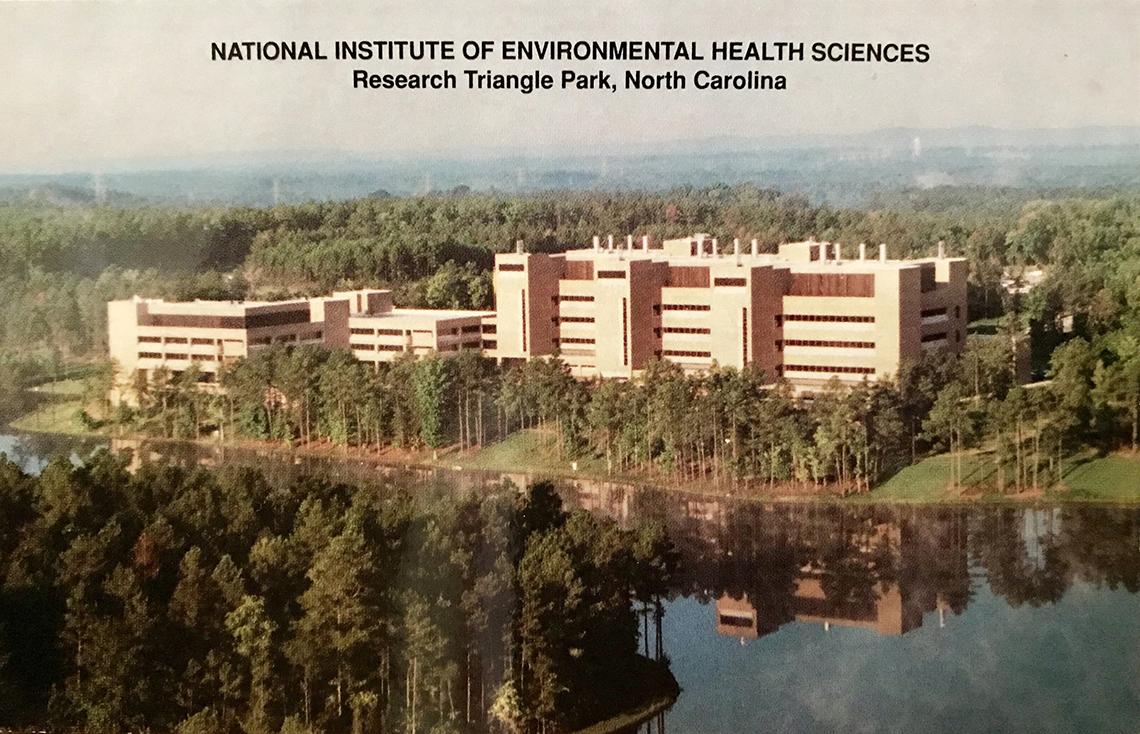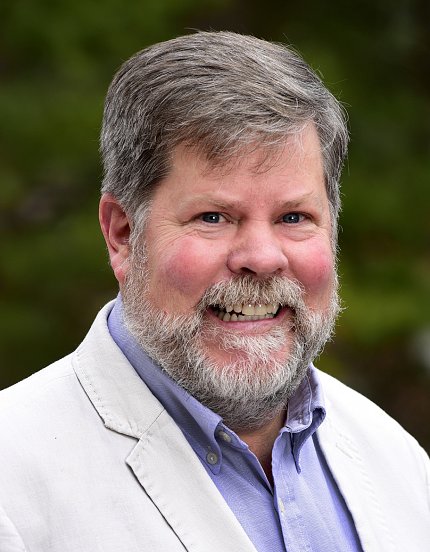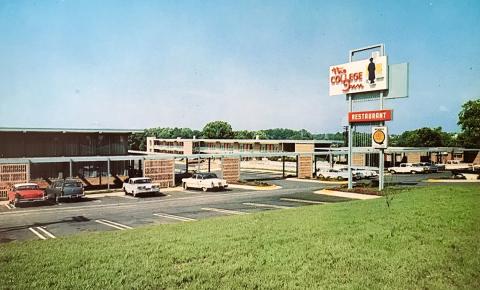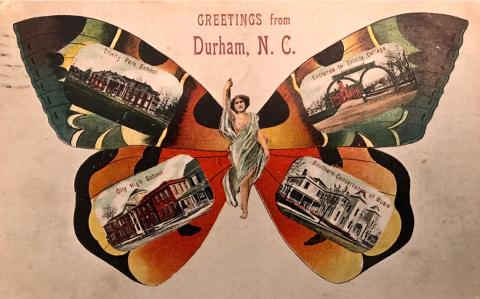NIEHS History Comes Alive with Postcards

NIEHS and the Durham, N.C., community recently were treated to an online tour of their common past. John Schelp, special assistant for community engagement and outreach in the institute’s Office of Science Education and Diversity (OSED), narrated “Postcards from Durham,” a 3-part history series.

Photo: Steve McCaw
He covered the beginnings of Research Triangle Park (RTP) and the effects of NIEHS coming to the Tar Heel State, among other topics. Schelp used postcards from his private collection to enhance the learning experience. Preservation Durham and the Museum of Durham History sponsored his presentations.
The story begins with an April 1960 meeting between Robert Kennedy, brother of the future president, and Terry Sanford, then a former state senator running for governor, at the College Inn in Raleigh. At the Democratic convention 3 months later, Sanford endorsed John F. Kennedy, who carried North Carolina and won the election.
“We don’t know what was discussed in that April meeting, but whatever goodwill the endorsement earned Sanford bore fruit 4½ years later,” said Schelp.

In January 1965, a federal committee recommended that NIH build its new environmental health sciences center in RTP. On Gov. Sanford’s last day in office, he and the U.S. surgeon general shared the news publicly.
“NIEHS was the first major organization to announce they were coming to RTP,” said Schelp. “IBM announced 6 weeks later and started building first. That one-two punch transformed the area into an economic engine of North Carolina. Others were here, but they were smaller at the time.”
A 509-acre parcel was designated as the future home of what is now NIEHS. Construction began in 1977, and the new campus welcomed its first scientists in 1983.
Schelp’s passion for Durham history began when he moved to town and purchased a Sears and Roebuck home that had been used as a parsonage for the West Durham Church of God. “From there, my interest expanded to my former mill village neighborhood and then to the rest of the city,” he said.

The year 2020 marks Schelp’s 30th year at NIEHS. “I started as an intern in 1991 and never left,” he said. He is well known in Durham for being what he calls a street historian. “I like the term. I don’t want to pretend that I’m a Ph.D.”
“When John and I began working together, he knew that I was new to the area, and he was quick to offer me a ‘windshield tour’ of Durham,” said OSED director Dr. Ericka Reid. “It was my first introduction to the city’s history and how it connects to NIEHS. I always refer to him as ‘Mr. Durham’ and the institute’s resident historian. Our visitors enjoy him very much. He is our absolute go-to for tours and information sessions.”
In addition to conducting some 60 NIEHS campus tours each year and showing institute visitors the local area, Schelp gives regular neighborhood walking tours.
“The city has changed so much,” he said. “The Duke family used to control 90 percent of the world’s cigarettes. Now, it’s illegal to smoke on a Durham sidewalk.”
Watch his presentation at https://www.youtube.com/watch?v=R1GTFdRh3Ug.
